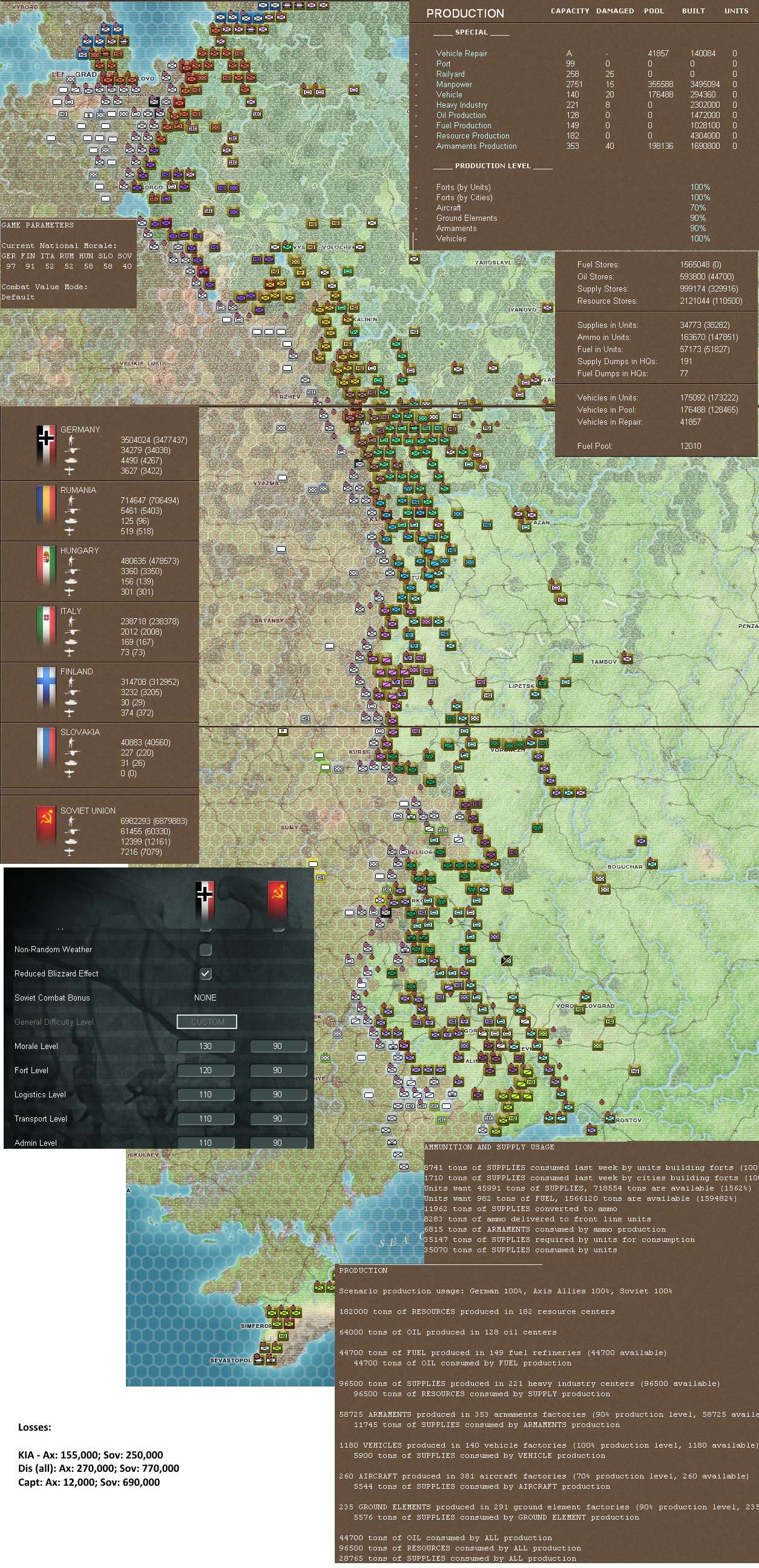With no +1, before the mud turns in November I made a total of 2 attacks (and one failed). If I'd been paying the sort of attention that I'd do in PBEM there might have been more but then my army would have been smaller and off-balance. So stripping out the +1 seems to reduce this to a game of attack vs defense. After the mud, the AI got rather over-extended and I managed a few localised attacks.
Only needing 4 wins to be considered for Gds status is quite a payback though. Even in PBEM, this should yield a decent stock of Gds unless playing an ultra-cautious German player.
Since I got out almost all my HI/Arms Pts, no real test of the new supply system. Like the flexibility, as you can see I set the air production low (why bother to build that many 1941 planes when the VVS is useless and they will be obsolete in 1942?). I really like choosing which air units to build, have basically concentrated on F/FB/TB with a few transport and recon. Equally good to be able to build bases rather than the old silliness of needing to ensure that they stacked with rubbish just to generate reinforcements in late 1941.
Being aware of the supply cost of digging in makes me a bit more organised with the deployment of rear area units, trying to fortify around key cities/river lines rather than all over the map.
Again, hard to judge for PBEM but didn't feel under much more pressure over admin pts ... but then I have got a lot better at managing SU generation and allocation.
Interesting to watch the supply-ammunition relationship reflect the intensity of fighting. That was just over 8,000 in the mud turns and as high as 22,000 when the fighting has been at its height.
The swap/refit routines seem to work exceptionally well, no longer having older TOEs hanging around.
Like the idea of units defaulting to Stavka when their corps command is removed, really helps to organise things and offsets some of the new demands on admin pts.







